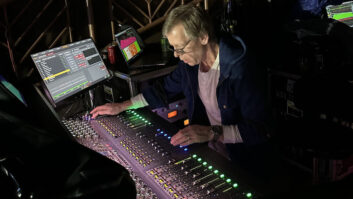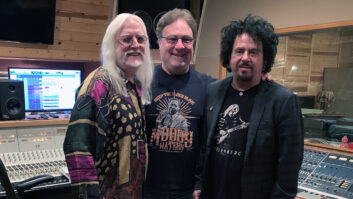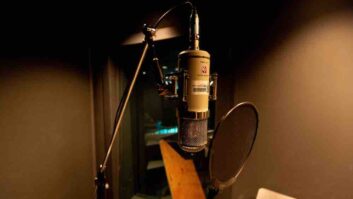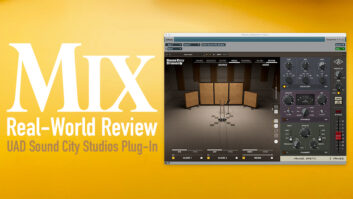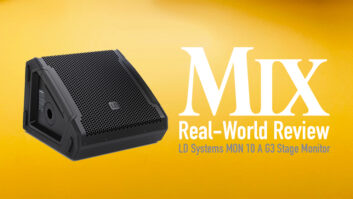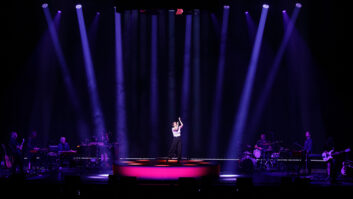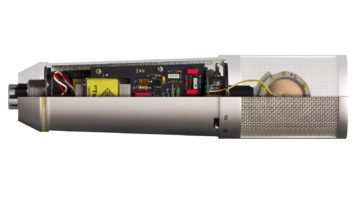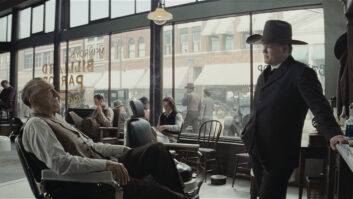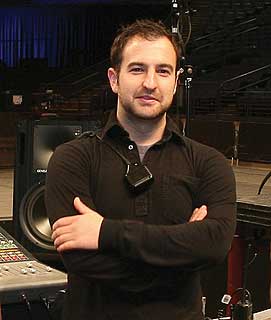
Above all else, the most critical sound reinforcement tool that we bring with us to every date is Norah’s Neumann vocal microphone. She’s been using some variant of a Neumann microphone or a Neumann capsule with a Sennheiser RF transmitter for almost all of her touring career. A Norah Jones show requires consistent tone quality. Transparency is very important because we cannot hide behind loud guitars or screaming fans. Every nuance of each musician’s performance is equally important to both the music and the sound reinforcement. With a typically busy tour day and many issues competing for our attention, we rely heavily on the performance of our tools.
—Brett Dicus, Norah Jones FOH Engineer
We ended up with 36 channels, including two audience mics. I also recorded a 4-channel pre-mix with a separate MIO 2882+DSP unit utilizing the FOH board mix-left/right, plus a pair of Schoeps CMC6MK4 mics in an ORTF stereo configuration at FOH. I would delay the board mix using the Delay Finder in Metric Halo’s SpectraFoo analysis software to get the time synched to the mics and record those tracks solitary, as well as mixed together at 16-bit/44.1kHz for an easily accessed overview of the gig. If the band wanted a CD right away, I could burn one or transfer the track to a thumb drive.
—Philip J. Harvey

Getting a great vocal tone that stands out in the mix but that does not kill everyone in the front row to hear it above the music can be a real nightmare. Here, the right mic choice can save the day. I use the Shure KSM9 because it has a switchable pickup pattern. In really small venues with a loud stage, I use the hypercardioid pattern for the extra noise rejection on the capsule. Another trick that really works well is to determine the dominant frequency in the singer’s voice and then cut about 2 to 3 dB of that frequency out of every other instrument onstage. This creates space for the vocal to sit in and lets the vocal cut through without pushing the level really hard and possibly distort your preamp. Adding a highpass filter at around 170 Hz can help keep sympathetic vibrations in the mic stand from causing feedback on stages that are hollow.
—Jayme Braun

One of our goals was to create an SR system with a huge wow factor for the audience, while providing outstanding audio excitement for our TV viewers. There were 3,000 in the Bella Centre with an additional 7,500 in the town square, and knowing that there’s a potential TV audience of a staggering 1.4 billion, we had to keep our wits about us. With virtually all artists during the evening choosing Sennheiser mics and wireless personal monitors, it meant that I could go into a live show with confidence. The [Sennheiser] SKM 5200 is really the only choice where broadcast or recording is concerned. You can get a lot of dynamics from them, and they’re a very rich-sounding mic. They won’t overload the front end on you and have such a great pattern with a really smooth sound.
—Derrick Zieba
We have all faced the problem at some point in our career where your vocal mics are grabbing a lot of the backline and cymbals from the kit. A cool little problem-solver for this is to use a product called Mic-Mute (www.micmute.com). These are infrared-activated gates that plug in between the microphone and the cable right at the mic stand. They are easily adjustable with trim pots for threshold and decay, and they also run off of phantom power. These are great for cleaning up your mix. I’ve had great success with these with a number of bands—especially when a singer or guitar player stands in the center of the stage in front of the drum kit.
—Fabrizio Del Monte
PLAY:
Tell us your tip
